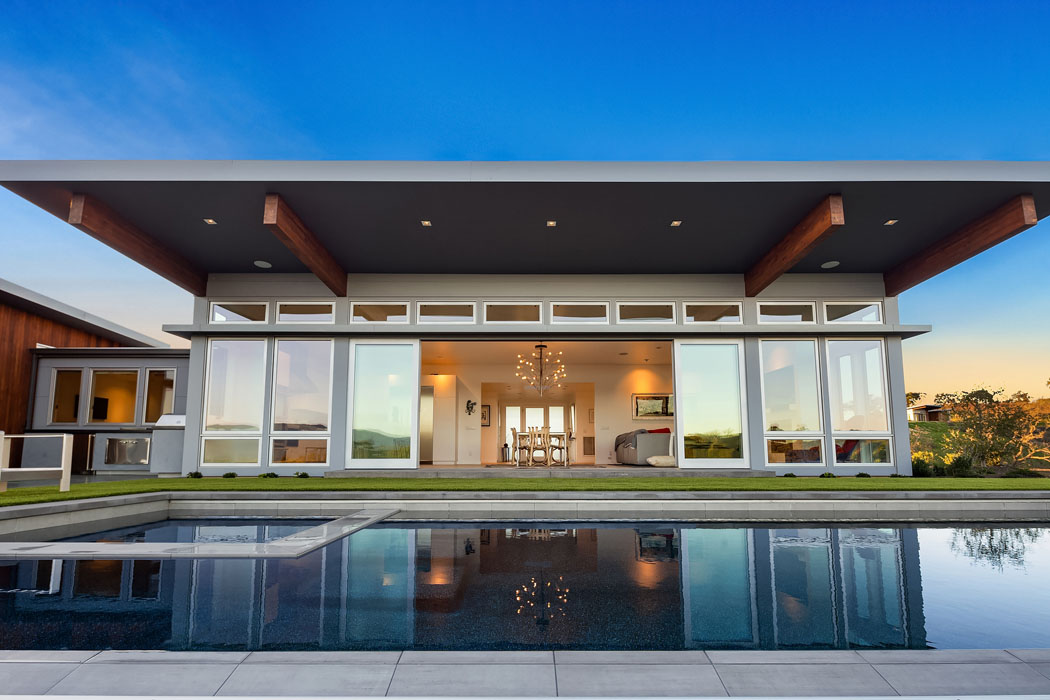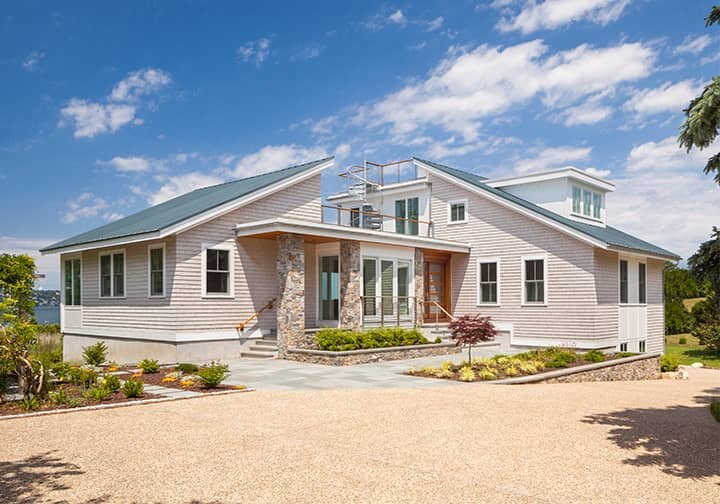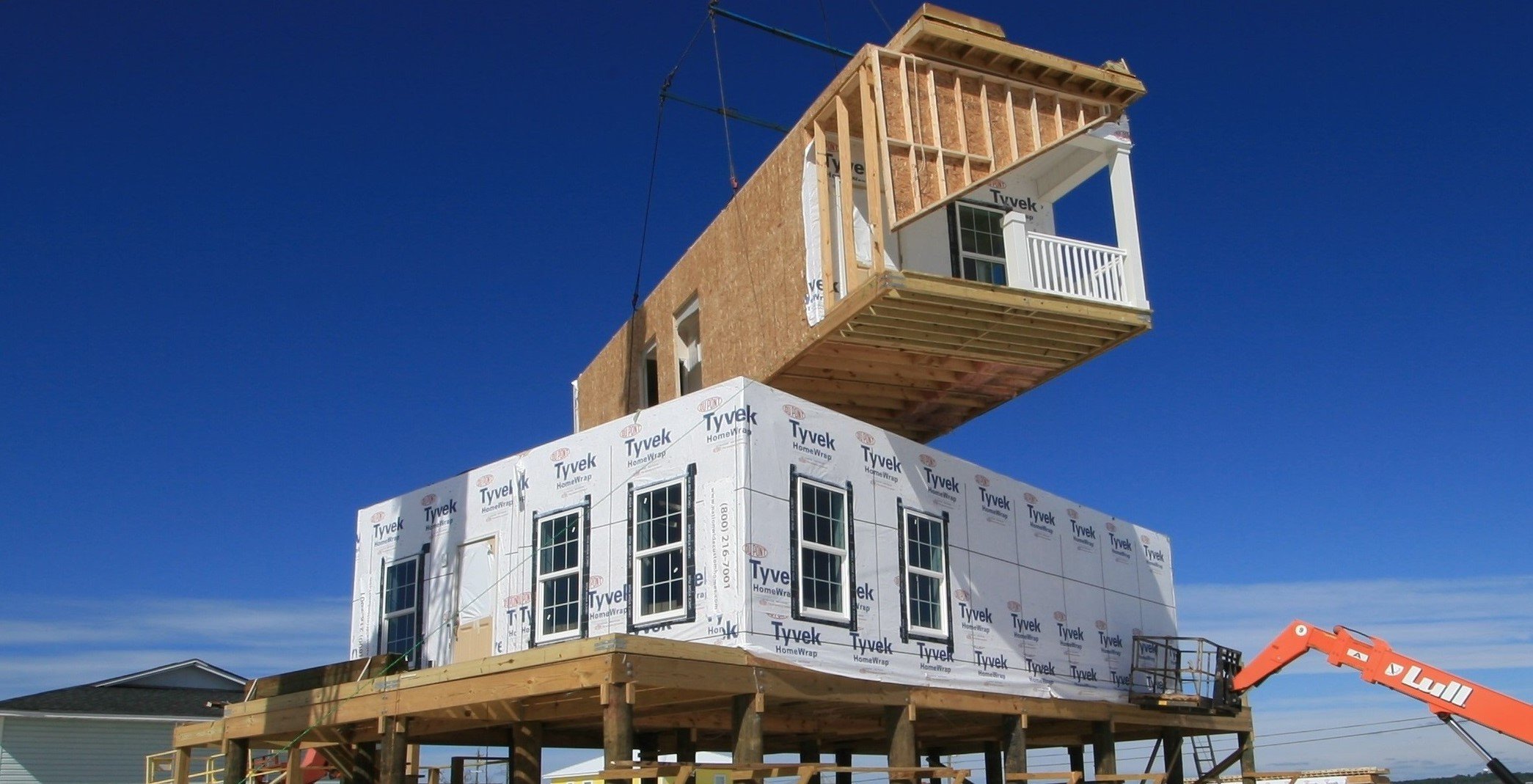Guide to Financing a Prefab Home

For most individuals looking to undertake a new prefab home building project, paying for the project up-front or in cash is out of the question. That means that buyers must seek outside financing from a bank, credit union, or other lender to help fund a portion of the prefab project. While it's possible, and getting easier over time, to finance a prefab project with loans from a bank or credit union, it is worth noting that there are some important nuances depending on your prefab project type. Our guide to financing a prefab home aims to break down the process of financing a prefab home and outlines key terms and common loan types for prefab projects, financing examples, banks and credit unions that typically assist with financing prefab projects, and addresses common questions about the financing process on prefab homes.
Product Comparison - Prefab Lenders - Prefab Financing Process - FAQs - Key Terms
While your project type, individual borrower profile, and even the chosen lender will all play a role in determining the characteristics of a loan, there are few key differences to understand when choosing the right financing type for your prefab project. There are differences in maximum financing amounts, who controls the pay-outs (and therefore what the money can be spent on), application and approval times, interest rates, and typical terms.
| Construction Loan | Home Equity Line of Credit (HELOC) |
Home Equity Loan | RenoFi (Renovation Loans) |
Cash-out Refinance | Personal Loan | |
|---|---|---|---|---|---|---|
| Maximum Lending Amount | Millions Can go up to and exceed $3,000,000 |
Hundreds of Thousands Can go up to and exceed $500,000 with limits on maximum and minimum draws |
Hundreds of Thousands Can go up to and exceed $500,000 Maximum borrowing amounts as a % of equity in one's home |
$500,000 Up to 125% of post-repair home value or 90% of current home value |
Hundreds of Thousands Can go up to and exceed $500,000 cash-out, Often restrictions on the maximum total mortgage amount |
$100,000 vary based on the institution and creditworthiness but can go up to |
| Term | Up to 30 years Shorter terms are possible |
Up to 30 years Broken down into interest only, and principal & interest periods |
Slightly shorter than HELOCs Can be as long as 20 years or more |
Up to 20 years on Home Equity Loans and 30 years on HELOCs and Cash-Out Refi | Up to 30 years Similar terms to a standard mortgage |
Shorter terms than other types of prefab financing options LightStream offers personal loans with up to a 7 year term |
| Control Over Payouts & Budget | Banks & Credit Unions Control payouts and must approve all builders and project plans Only in some cases can it be used to purchase land. |
Individuals | Individuals | Banks & Credit Unions/ Individuals Individuals control pay-outs that have been pre-approved by the bank |
Individuals | Individuals |
| Requirements | -Completed construction plans -Detailed project budget -Financial history check (often with requirements on minimum credit scores, income, and debt to income ratios) -Minimum down-payment (a standard downpayment is 20% cash down, individuals who already own land can sometimes use the equity in their land towards their minimum down payment) |
-Established equity in a home -Financial history check (often with requirements on minimum credit scores, income, and debt to income ratios) |
-Established equity in a home -Financial history check (often with requirements on minimum credit scores, income, and debt to income ratios) |
-Home Appraisal and Project Valuation - Financial information: including a credit check (most of RenoFi’s partners typically require a credit score of at least 660)-Construction documents including contractor information, detailed cost estimates, a contract, and renovation or ADU drawings |
-Established equity in a home -Financial history check(often with requirements on minimum credit scores, income, and debt to income ratios) -Ability to refinance current mortgage |
-Financial history check (often with requirements on minimum credit scores, income, and debt to income ratios) |
| Interest Paid in Relation to Other Loan Types | Medium | Low | Low | Medium | Low | High |
| Application & Approval Timeframe | Months | Weeks | Weeks | Weeks - Months | Weeks | Days (Some companies offer same day application & approval) |
| Best Used For | Prefab Home Construction | ADU Construction or Tiny Home Purchase | ADU Construction or Tiny Home Purchase | ADU Construction | ADU Construction, Tiny Home Purchase, or Additional Land Purchase | ADU Construction or Tiny Home Purchase, or Land Purchase |
Companies That Finance Prefab Projects
-
Umpqua Bank - Construction to Permanent Loan
-
Washington Federal - Construction to Permanent Loan, Lot Loan
-
One Trust - Construction to Permanent Loan, Lot Loan
-
Citizens Bank - Construction to Permanent Loan, Lot Loan
-
US Bank - Construction to Permanent Loan
-
LightStream - Personal Loan
-
RenoFi - Home Equity Loan, HELOC
-
SoFi - Cash-out Refi, Personal Loan
-
Figure - Cash-out Refi, HELOC, Personal Loan
Frequently Asked Questions
Can you finance a prefab home?
Yes. Though the types of loans available may differ based on the type of project and your individual financial circumstances. For example, new construction modular homes, kit homes, and panelized homes are often best financed with a construction or construction-to-permanent loan while an ADU may be best financed with a HELOC, home equity loan, cash-out refi, and a tiny home may be best financed using a personal loan.
Why is it more difficult to finance a prefab home than a traditional site-built house?
Due to the way the draw process is structured on most traditional construction loans - draws are spaced out over a series of checkpoints throughout the build process; and the construction timeline on a prefab home - site preparations and component manufacturing can take place at the same time and often early on in the project timeline which requires more capital, earlier on in the process, some banks do not offer lending on prefab home projects.
ADUs and tiny homes are newer products and as such, not all financial institutions have developed products that are targeted for this market; however, some existing financing products can be used.
Do all banks finance prefab homes?
Not all banks finance prefab homes. We have found a number of financial institutions that regularly work with individuals to finance prefab projects.See our full list of companies that finance prefab projects.
What is the process of financing a prefab home?
The process for financing a prefab home is much like that of financing a traditional, site-built home. This process includes:
-
Finding and owning a buildable lot. This is the easiest way to begin a project - it allows buyers and companies to work together and determine suitable prefab homes that can be built on a lot and begin to formulate an initial project budget.
-
At this point, buyers can also work with a qualified lender to get pre-approved for a loan. This allows buyers to establish an initial budget.
-
Buyers finalize the home design and the chosen company creates home plans and a detailed project budget, both of which are necessary to officially apply for a construction loan.
-
Buyers submit final construction documents and financial information for approval. If approved, the funds can be prepared for the initial draw by the manufacturer.
-
Over the course of construction, periodic draws on the loan are made by the prefab home company (and general contractor, if necessary). During this time, payments on the construction loans are typically interest only.
-
Once the home is completed, the final funds are dispersed to the builder, and the home is approved on the final inspections, payments on the construction loan are made towards both the interest on and principal of the loan for the remainder of the term.
**The financing process for an ADU, manufactured home, or tiny home using a HELOC while similar to the process above, differs slightly. Similar to the draw process on a construction loan, individuals borrowing with a HELOC have access to a certain limit of credit over a set period of time. During this time, individuals can make draws on their loan as necessary, so long as the credit limit is not exceeded. During this time, payments are typically interest only, and at the end of this borrowing period, payments are made towards both the principal and interest.
| Financing a Prefab Home with a Construction-to-Permanent Loan | ||
|---|---|---|
| Notes | ||
| Land Cost | $80,000 | Owned & Paid in-full |
| Prefab Home Cost | $500,000 | |
| Construction Loan Amount | $480,000 | 18-months interest only, requires 20% project value down, 3.00% interest |
| Cash down | $100,000 (Land Equity + $20,000) |
Includes $80,000 in equity from Land |
| Monthly Payments During Construction | $1,200 | |
| Interest paid during construction | $21,600 | |
| The Home is Completed & Move-in Ready & The Construction Loan Transitions into a Traditional Mortgage |
||
| Mortgage Amount | $480,000 | 30-year term, 3% fixed interest rate |
| Monthly Payment | -$2,024 | |
| PLEASE NOTE: THESE MODELS ARE NOT GUARANTEES AND SHOULD NOT BE CONSIDERED FINANCIAL ADVICE. THEY ARE FOR EDUCATIONAL PURPOSES ONLY AND PURELY ILLUSTRATIVE EXAMPLES OF POTENTIAL BUYING SCENARIOS. BUYERS SHOULD DO THEIR OWN DILIGENCE BEFORE MAKING ANY PURCHASE. | ||
What is required to finance a prefab home?
In addition to required financial information (credit check, income information, financial history, etc.) individuals applying for a construction or renovation loan must also submit detailed information on their chosen company, project plans, and a detailed project budget.
Key Terms
-
Prefab Home - broad term that refers to all types of homes that are built using components that are manufactured off-site. Types of prefab construction include:
-
Modular Home - one of the most common types of prefab construction, modular homes are built using box-like home modules that are constructed off-site and later joined together and placed on a foundation at the final build site. Home modules can be delivered up to 95% complete and often require the least amount of on-site work. Modular homes appreciate (or depreciate) in value the same as a site-built home.
-
Manufactured Home - also referred to as mobile homes, manufactured homes are constructed off-site like a modular home, but to a different set of building codes established by the U.S. Department of Housing and Urban Development (HUD). While the construction process is similar to that of a modular home, manufactured homes typically are not eligible for traditional construction loans and mortgages and do not carry value the same way as a traditional home or other types of prefab homes.
-
Kit Home - depending on the chosen company and project, kit homes can range from a set of unassembled building materials which are shipped to and then assembled at the final build site to more complete panelized homes that utilize prefabricated structural insulated panels (SIPs) that are joined together at the final project site. Depending on the company you work with and the degree of prefabrication of your material kit, some kit homes and panelized homes are classified as site-built homes for financing purposes. Such projects could then be financed using a traditional construction loan.
-
Tiny Home - most tiny homes are manufactured to a high-degree of completion off-site and later shipped to the build site. While more and more traditional banks and credit unions are developing lending solutions for tiny homes, they often cannot be financed using standard construction loans. One of the most common financing methods for a tiny home is a high-value, personal loan.
-
Auxiliary Dwelling Units (ADUs) - while not all ADUs are constructed using prefab construction techniques, many companies utilize modular or panelized construction. It is not common to be able to use a construction loan for an ADU, often requiring individuals to use other financing methods like personal loans, HELOCs, or cash-out refinance loans.
-
Common Loan Types - not all banks/credit unions are able finance certain types of prefab home project, nor do all lenders offer the same range of financing options. The best option for your situation will depend on your project type and individual needs. Common loan types for prefab home construction include:
-
Construction Loan - often short, 1 to 2 year loans, that are used to finance the construction of your prefab home. During construction, borrowers typically pay interest only on the borrowed amount, and once construction is complete, borrowers typically refinance the loan into a long-term mortgage. Draws on the loan are periodically made at predetermined intervals in the project to the manufacturer and/or general contractor. Depending on your chosen lender and project type, not all banks offer construction loans on prefab projects.
-
Construction-to-Permanent Loans - also called “single close” loans, this type of loan has the same type of structure as a construction loan but is automatically rolled into a mortgage once the construction process is complete, eliminating the need to refinance the loan.
-
Home Equity Line of Credit (HELOCs) - a line of credit that allows borrowers to borrow against the established equity in their home. It operates similarly to a credit card in that borrowers have access to a certain amount of money and if paid down, can access more of their line of credit. There is typically a period where individuals have access to their line of credit and then a set repayment period afterwards.
-
Home Equity Loan - similar to a HELOC, individuals borrow against their equity in their home however, it is a one time loan rather than a line of credit. Therefore, individuals can borrow up to their approved amount on a one time basis and then make set payments over the term of the loan.
-
Cash-out Refinance - this replaces one’s current mortgage with a new mortgage and the difference in value between the two is paid out in cash. For example, an individual has $150,000 remaining on their current mortgage but opts to refinance their mortgage for $250,000. They receive the difference, $100,000, in cash and take on a new mortgage of $250,000.
-
Personal Loan - money borrowed from a lender for a range of purposes that is paid back in monthly installments. Personal loans are typically for less money and have shorter terms than construction loans and home equity-based loans.
If you are a lender that finances prefab construction projects and want to be included on our list of companies that finance prefab homes, contact us at info@prefabreview.com. Or, if you know a company that finances prefab home projects, contact us at info@prefabreview.com.




